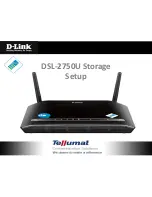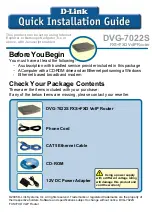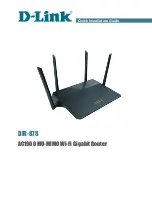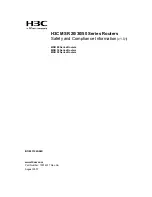
36" MAX.
CENTER LINE
OUTSIDE WALL
STEP 9:
Route the Wire from Control to Sensor
Run wire to the outdoor temperature sensor. Sensor is not affected by lead length. In either case, do not run outdoor temperature sensor alongside wires
carrying high voltage (120 VAC or higher). Secure the sensor bracket with a #8 galvanized screw.
STEP 10:
Attach Sensor Wire to
Humidifier Control
Strip wire 1/4 inch, and insert the wires from
the Sensor into the terminals labeled “ODT”
on the Humidifier Control. See
Figure F
for
location of terminals.
Installing the Humidifier Control for Manual Operation
If it is not feasible to use the Outdoor Temperature Sensor, the Humidifier Control can be operated
in Manual Mode.
1. Connect the Manual Mode Resistor Case
wires to the terminals labeled “ODT” on the
Humidifier Control.
2. Snap the Manual Mode Resistor Case into the
slot provided so that Resistor Case sticks out
from the bottom edge of the base.
3. Remove the control knob and apply the
Manual Mode label to the cover, aligning the
sticker and knob holes. Re-install the knob.
STEP 8:
Alternate Location for Outdoor Temperature Sensor
The Sensor can also be mounted in the center of either:
• 2 inch PVC fresh air intake pipe for the furnace
OR
• 6 inch fresh air intake duct. Mount the sensor with a #8 galvanized screw.
In both cases, the Sensor must be no more than 3 feet from the outside wall.
See Figure E.
If it is not feasible to use the Outdoor Temperature Sensor in any of the ways
described, the Humidifier Control can be installed for Manual Operation.
See box below and
Figure G
for details.
STEP 11:
Determine Power Source for Humidifier Control
Determine where you will get 24 VAC to power the Humidifier Control based on the 2 options below:
OPTION 1:
FURNACES WITH ACCESSORY TERMINALS. If the accessory terminals provide:
• 24 VAC: Wire these directly to the “R” and “C” terminals on the Humidifier Control.
• 120 VAC: Wire to a 24 VAC transformer, which in turn connects to the “R” and “C”
terminals on the Humidifier Control.
In either case, the voltage to the Humidifier Control must be between 22 VAC – 30 VAC.
OPTION 2:
EXTERNAL 24 VAC TRANSFORMER:
Wire into a power source other than the furnace
blower circuit. The transformer can be powered off
the 120 VAC line at the junction box before it enters
the furnace. The 24 volt side of the transformer is
connected to the “R” and “C” terminals on the
Humidifier Control.
STEP 12:
Wiring
NOTE:
The control will function with either a switched or continuous 24 VAC power source. See
Diagrams A-D
for wiring options.
Figure E
Figure F
NOTES:
• The Humidifier Control will operate properly with either a switched or continuous power source.
• Whether using ACCESSORY TERMINALS OR an EXTERNAL TRANSFORMER, the minimum VA required is; 2.0 VA for
Power Humidifiers; or 10.0 VA for Bypass Humidifiers.
• When power is connected for the first time, the red and green LEDs will light momentarily.
24V
R
C
BYP
ASS
ODT
H
PO
WER
R
24V
BYP
ASS
C
ODT
H
PO
WER
Figure G
NORTH, EAST
OR WEST SIDE
OF HOME
OUTDOOR
TEMPERATURE
SENSOR
SENSOR
BRACKET
SENSOR
ABOVE EXPECTED
SNOW LINE
OUTDOOR
TEMPERATURE SENSOR
LEADS
Figure D
STEP 6:
Determine Location for Outdoor Temperature Sensor
The location of the Outdoor Temperature Sensor must meet these three requirements:
1. Must be mounted on North, East or West side of house out of direct sunlight
2. Must be at least 3 feet from all exhaust vents
3. Must be above expected snow line (See
Figure D
)
Incorrect humidity levels will result if these requirements are not met.
STEP 7:
Locate Existing Access Hole to Outside
A convenient way to get the Sensor wire outside is to make use of unused
wires running to the A/C condensing unit (if applicable). Other ways are to use
existing holes for Cable TV lines, telephone lines, A/C lines, etc. Read all
equipment instructions beforehand for possible conflicts and warnings.
90-998
90-999
90-1012
90-1013






















